Joana Vasconcelos thinks big for Jupiter Artland’s tenth birthday
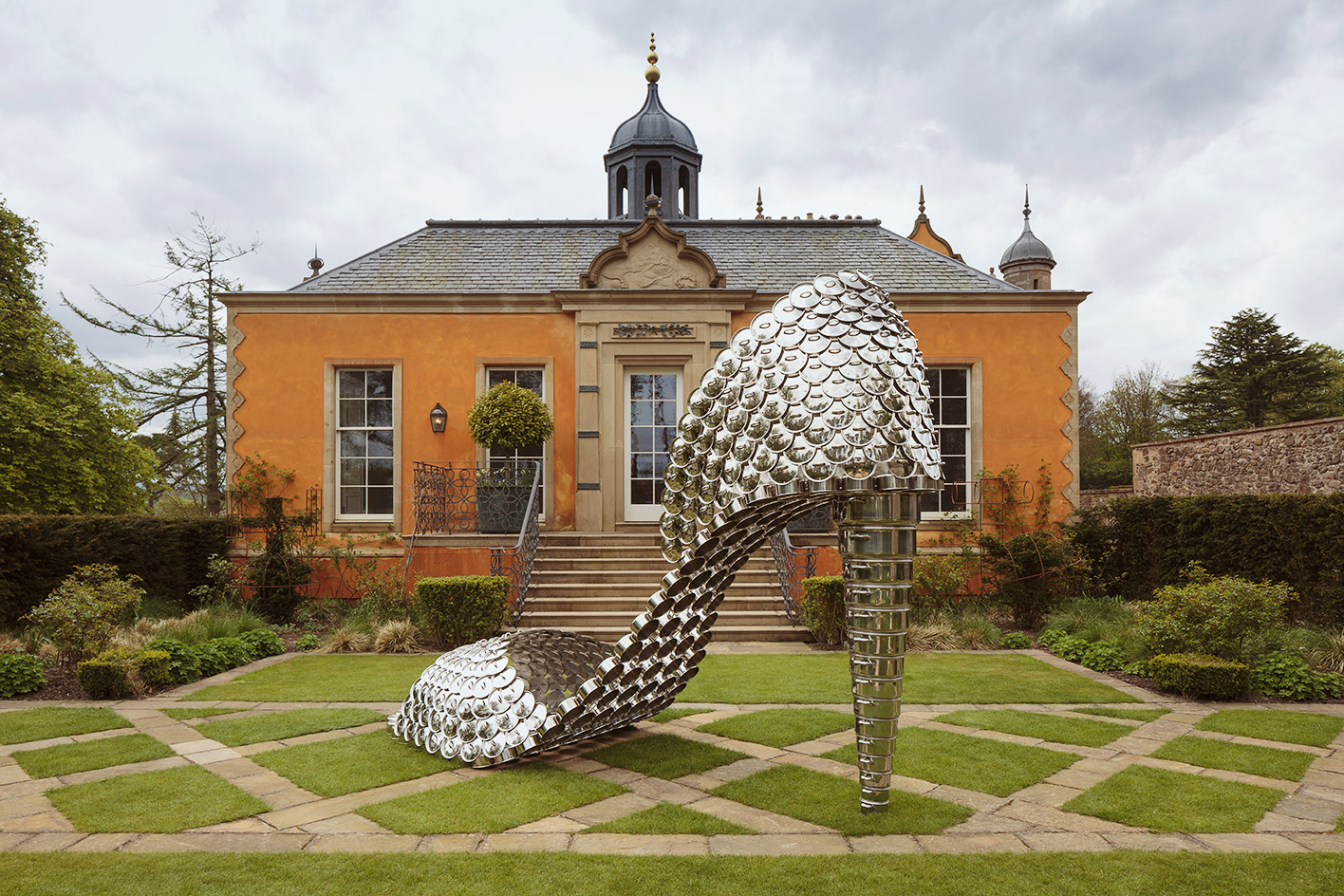
Jupiter Artland – the evocatively named sculpture park nestled in a pocket of rural Scotland – has turned a decade old, and opened a fresh season last month with an ambitious new programme. Sprawling across 100 acres of lawns, meadows and woodland on Edinburgh’s fringe, the park is owned, funded and inhabited by collectors Nicky and Robert Wilson.
It’s a tough task to find a focal point in such a vibrant, diverse and star-studded space. Perhaps the utopian ‘turf mounds’ of Charles Jencks’ Cells of Life, or Antony Gormley’s tangled Firmament, or even Cornelia Parker’s brooding landscape with Gun and Tree? Perhaps it’s better to home in on Jupiter’s most recent recruits: two illustrious female artists dominating both the contemporary art and Scottish landscape.
A new exhibition by Portuguese artist Joana Vasconcelos tackles themes of gender, socio-politics and intercultural craftsmanship. In 2005, the artist seized attention with her provocative use of materials at the 51st Venice Biennale; in 2012, she became the first woman and youngest artist to have ever exhibited in the Palace of Versailles with A Noiva (The Bride), a chandelier work composed of 25,000 tampons.
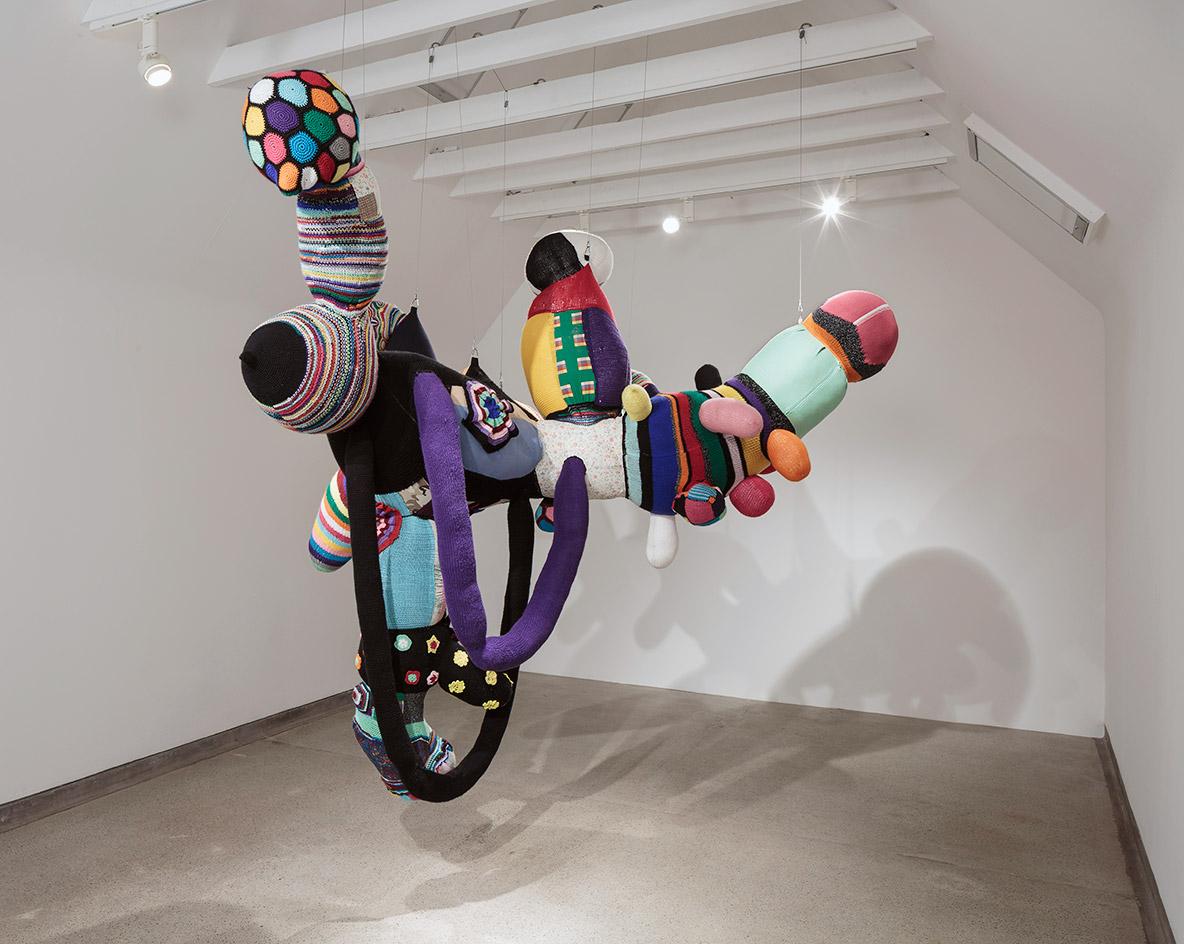
Valkyrie #3, 2004, by Joana Vasoncelos. Courtesy of Jupiter Artland
Her work is consistently outsized and adventurous. ‘I’m not afraid of many things that were in the past were used as problems for women,’ she says. In a place so dense with Scottish history, Vasconcelos’ work – though firmly rooted in Portuguese tradition – feels very much at home. And there are links: tradition marries tradition and seemingly opulent sculptures sit within an opulent environment.
Take Red Independent Heart #3 (2008), a colossal rotating sculpture hung in the centre of Jupiter’s Jacobean ballroom. The crimson construction sparkles as it rotates to a traditional Portuguese soundtrack. From afar, the heart appears to be made from thousands of precious jewels; up close the viewer is blinded by iridescence, realising that in fact comprises 1,000 pieces of plastic cutlery, bent and bound together using the filigree technique; Vasconcelos has engineered a trompe l’oeil that leaves us questioning how fell into its deception.
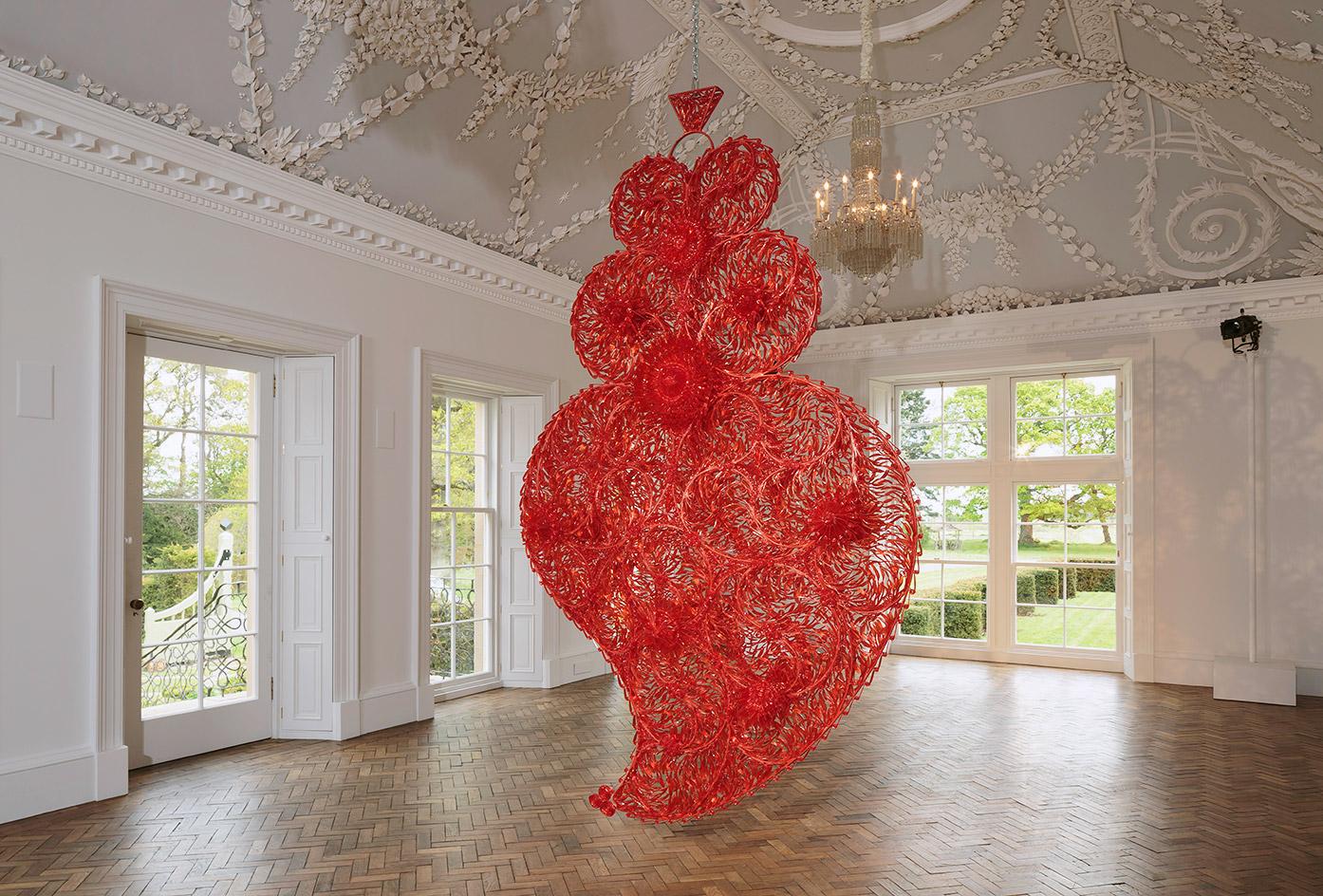
Coração Independente Vermelho (Red Independent Heart), 2005, by Joana Vasoncelos. Courtesy of Jupiter Artland
This theme continues on the lawn of the Ballroom Garden, where another of her pieces, Carmen Miranda (2008) glistens in the sun. This huge metallic stiletto – made from industrial stainless steel pans and lids – is a commentary on femininity and the role of women in a domestic environment.
‘All my engineers and architects said, “It’s not going to sustain itself, it’s going to fall down,”’ presuming that as a woman, Vasconcelos would have no idea about engineering and construction. ‘I [retorted], “It’s going to sustain,”’ she recalls. ‘“You don’t know about high heels, I know about high heels.”’ And sustain it has, in all its surreal majesty.
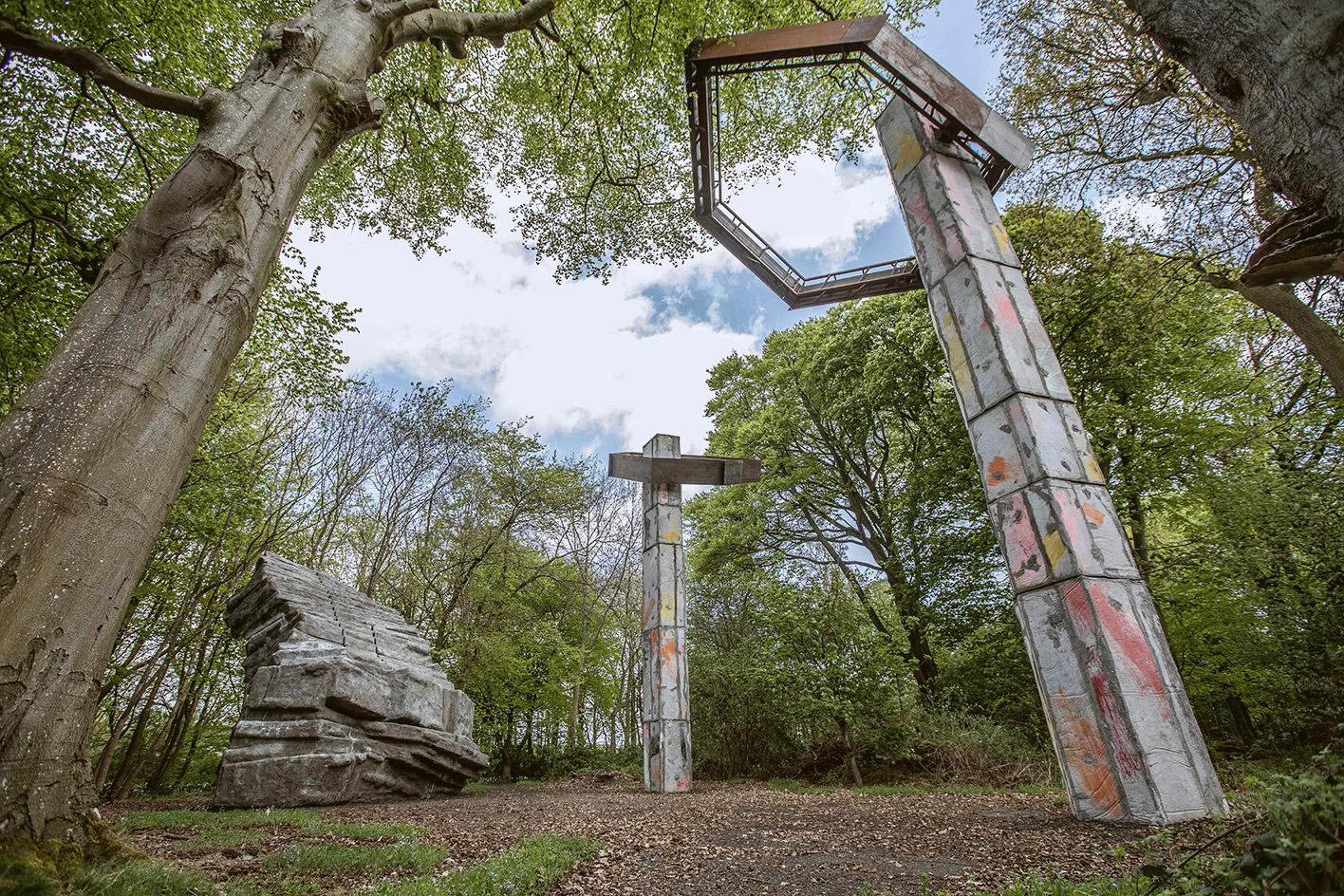
Quarry, 2018, by Phyllida Barlow. Courtesy of Jupiter Artland
Vasconcelos’ presentation sits alongside British artist Phyllida Barlow’s new large-scale sculptural installation. ‘Times have changed for women,’ says Vasconcelos. ‘If you look at Phyllida’s and my career, they are 30 years apart – a lot has changed in the world.’
Barlow’s first permanent outdoor commission, Quarry, is well woven into its surroundings. Occupying a woodland clearing, the trio of site-specific sculptures complement their environment. Two immense, dystopian concrete pillars with ‘sky frames’ stand adjacent to a mountainous boulder with a haphazard flight of steps, reflecting reflect Barlow’s signature textures and imposing scale. ‘There was the complex issue of meddling with nature,’ Barlow says, ‘to have empathy, but also be in stark contrast.’
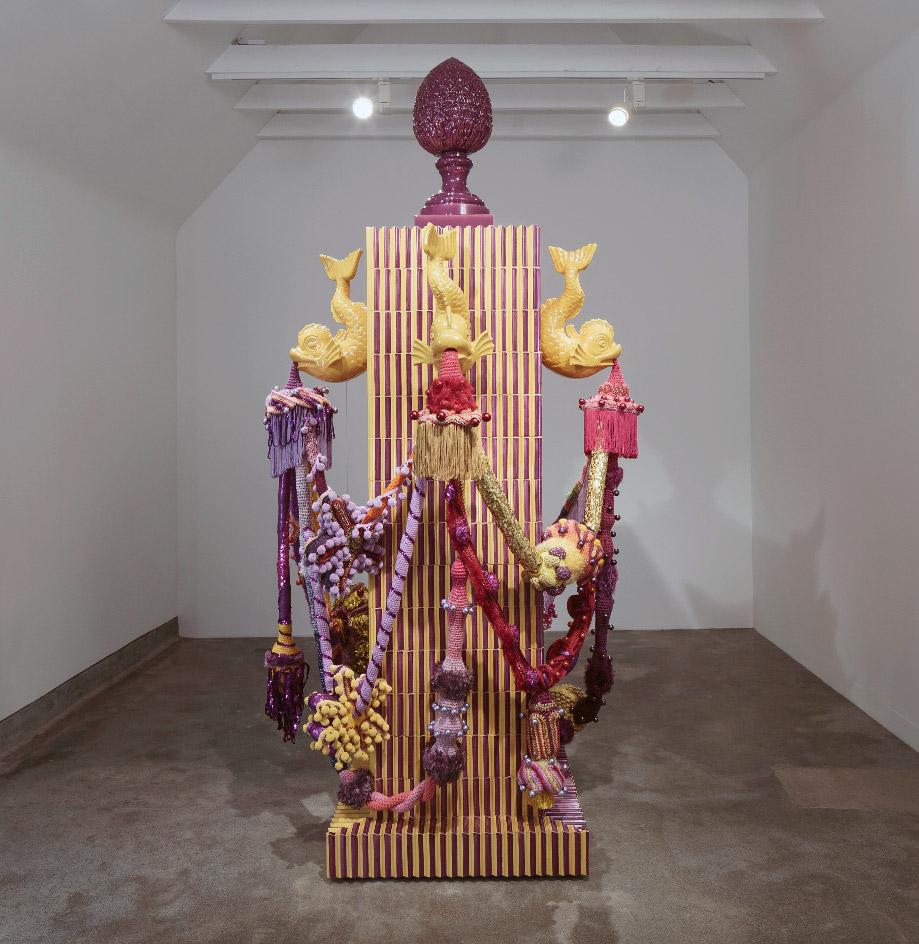
Volupta, 2014, by Joana Vasoncelos. Courtesy of Jupiter Artland
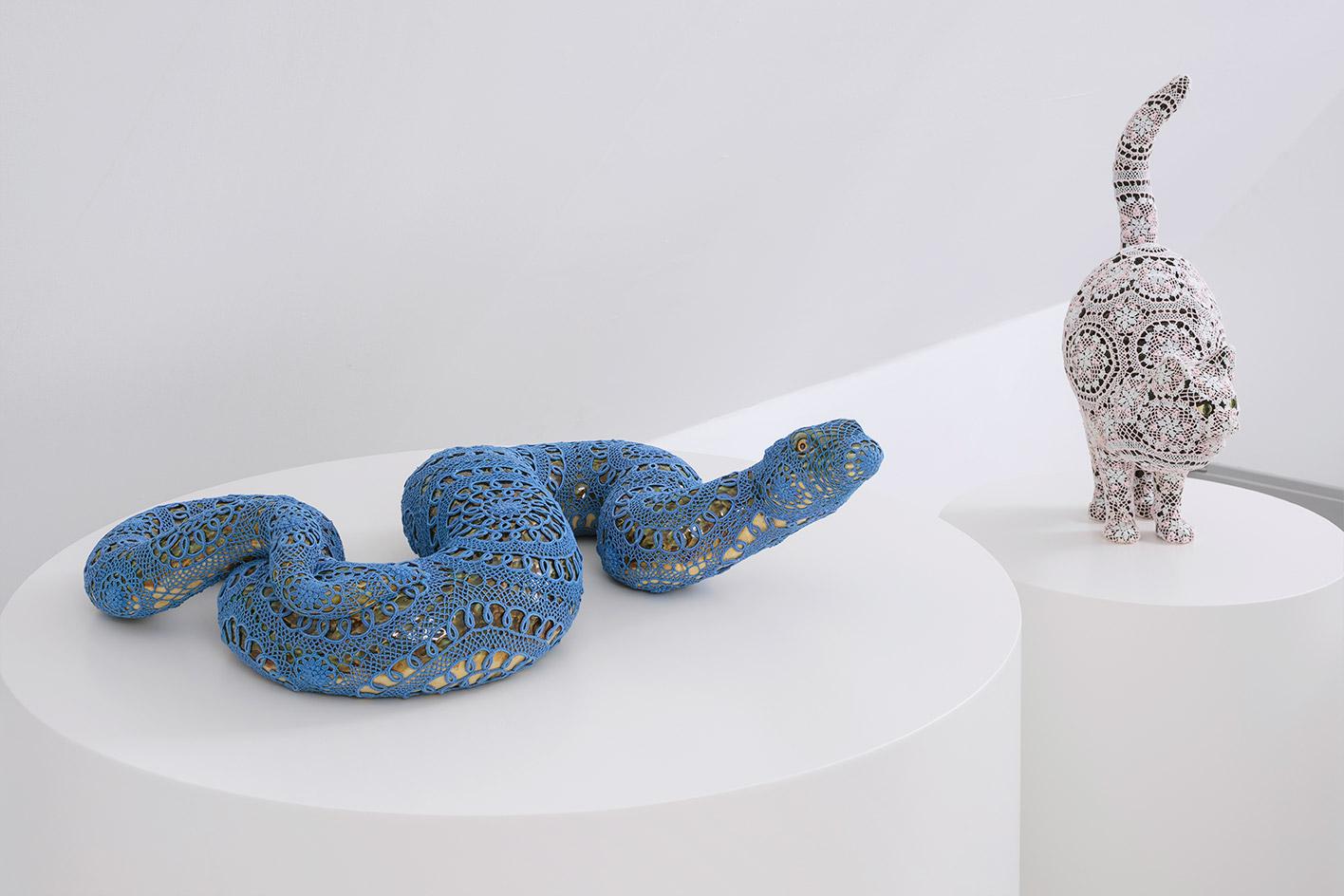
Adalinda, 2017, by Joana Vasoncelos. Courtesy of Jupiter Artland
Information
‘Joana Vasconcelos: Gateway’ is on view until 30 September. For more information, visit the Jupiter Artland website
Address
Wallpaper* Newsletter
Receive our daily digest of inspiration, escapism and design stories from around the world direct to your inbox.
Jupiter Artland
Bonnington House Steadings
Wilkieston
Edinburgh EH27 8BY
Harriet Lloyd-Smith was the Arts Editor of Wallpaper*, responsible for the art pages across digital and print, including profiles, exhibition reviews, and contemporary art collaborations. She started at Wallpaper* in 2017 and has written for leading contemporary art publications, auction houses and arts charities, and lectured on review writing and art journalism. When she’s not writing about art, she’s making her own.
-
 ‘Humour is foundational’: artist Ella Kruglyanskaya on painting as a ‘highly questionable’ pursuit
‘Humour is foundational’: artist Ella Kruglyanskaya on painting as a ‘highly questionable’ pursuitElla Kruglyanskaya’s exhibition, ‘Shadows’ at Thomas Dane Gallery, is the first in a series of three this year, with openings in Basel and New York to follow
By Hannah Silver
-
 Australian bathhouse ‘About Time’ bridges softness and brutalism
Australian bathhouse ‘About Time’ bridges softness and brutalism‘About Time’, an Australian bathhouse designed by Goss Studio, balances brutalist architecture and the softness of natural patina in a Japanese-inspired wellness hub
By Ellie Stathaki
-
 Marylebone restaurant Nina turns up the volume on Italian dining
Marylebone restaurant Nina turns up the volume on Italian diningAt Nina, don’t expect a view of the Amalfi Coast. Do expect pasta, leopard print and industrial chic
By Sofia de la Cruz
-
 Inside Jack Whitten’s contribution to American contemporary art
Inside Jack Whitten’s contribution to American contemporary artAs Jack Whitten exhibition ‘Speedchaser’ opens at Hauser & Wirth, London, and before a major retrospective at MoMA opens next year, we explore the American artist's impact
By Finn Blythe
-
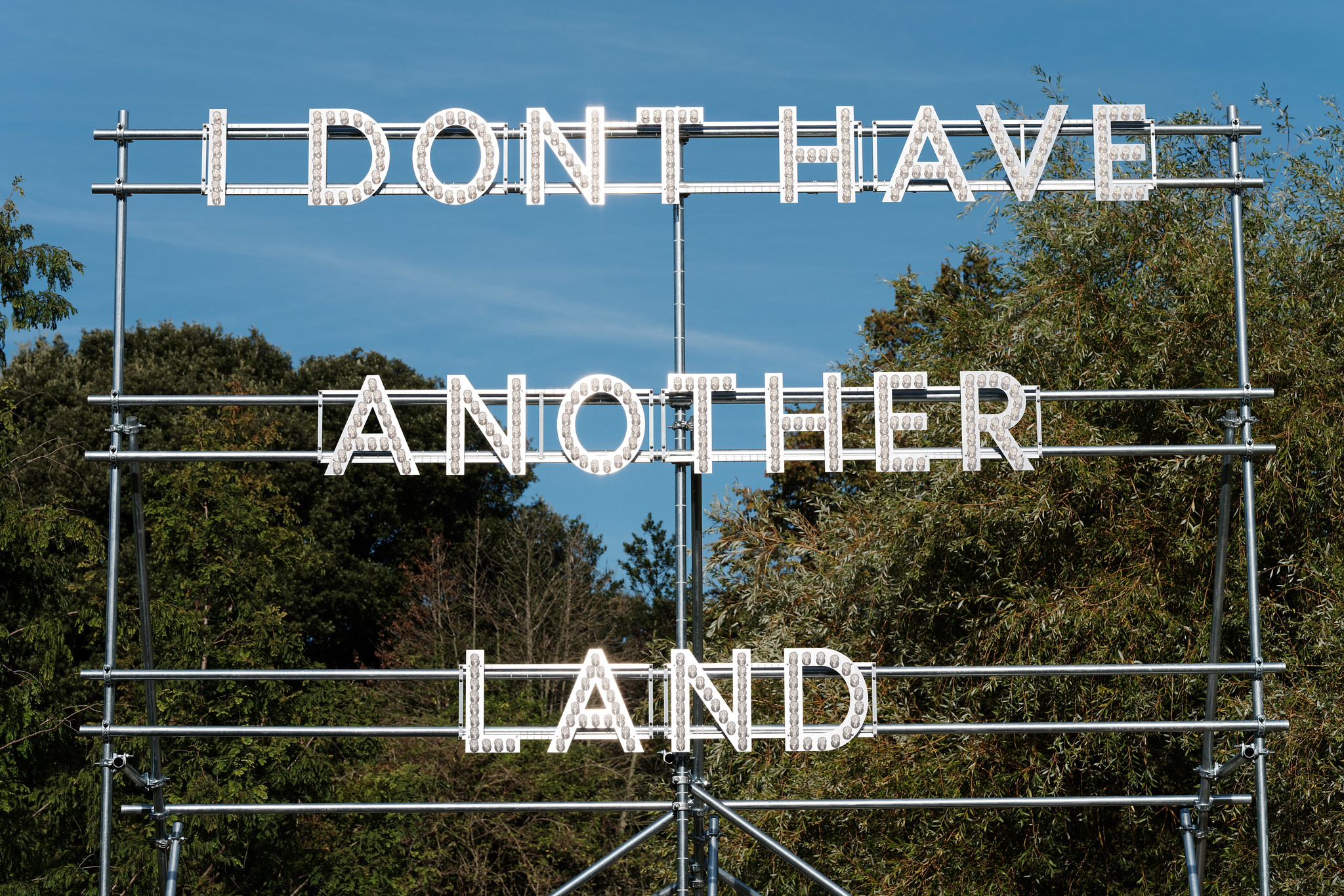 Frieze Sculpture takes over Regent’s Park
Frieze Sculpture takes over Regent’s ParkTwenty-two international artists turn the English gardens into a dream-like landscape and remind us of our inextricable connection to the natural world
By Smilian Cibic
-
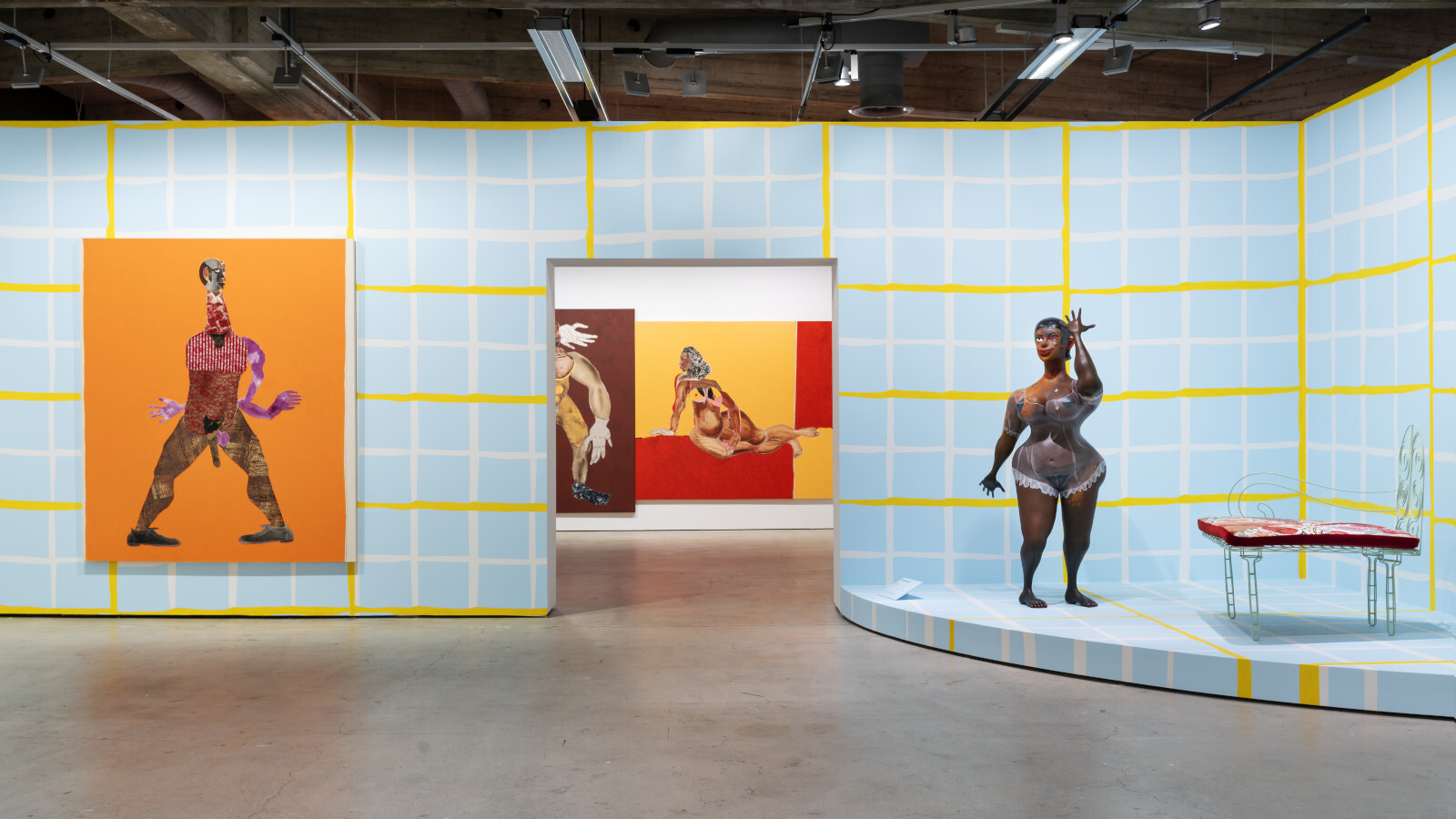 Harlem-born artist Tschabalala Self’s colourful ode to the landscape of her childhood
Harlem-born artist Tschabalala Self’s colourful ode to the landscape of her childhoodTschabalala Self’s new show at Finland's Espoo Museum of Modern Art evokes memories of her upbringing, in vibrant multi-dimensional vignettes
By Millen Brown-Ewens
-
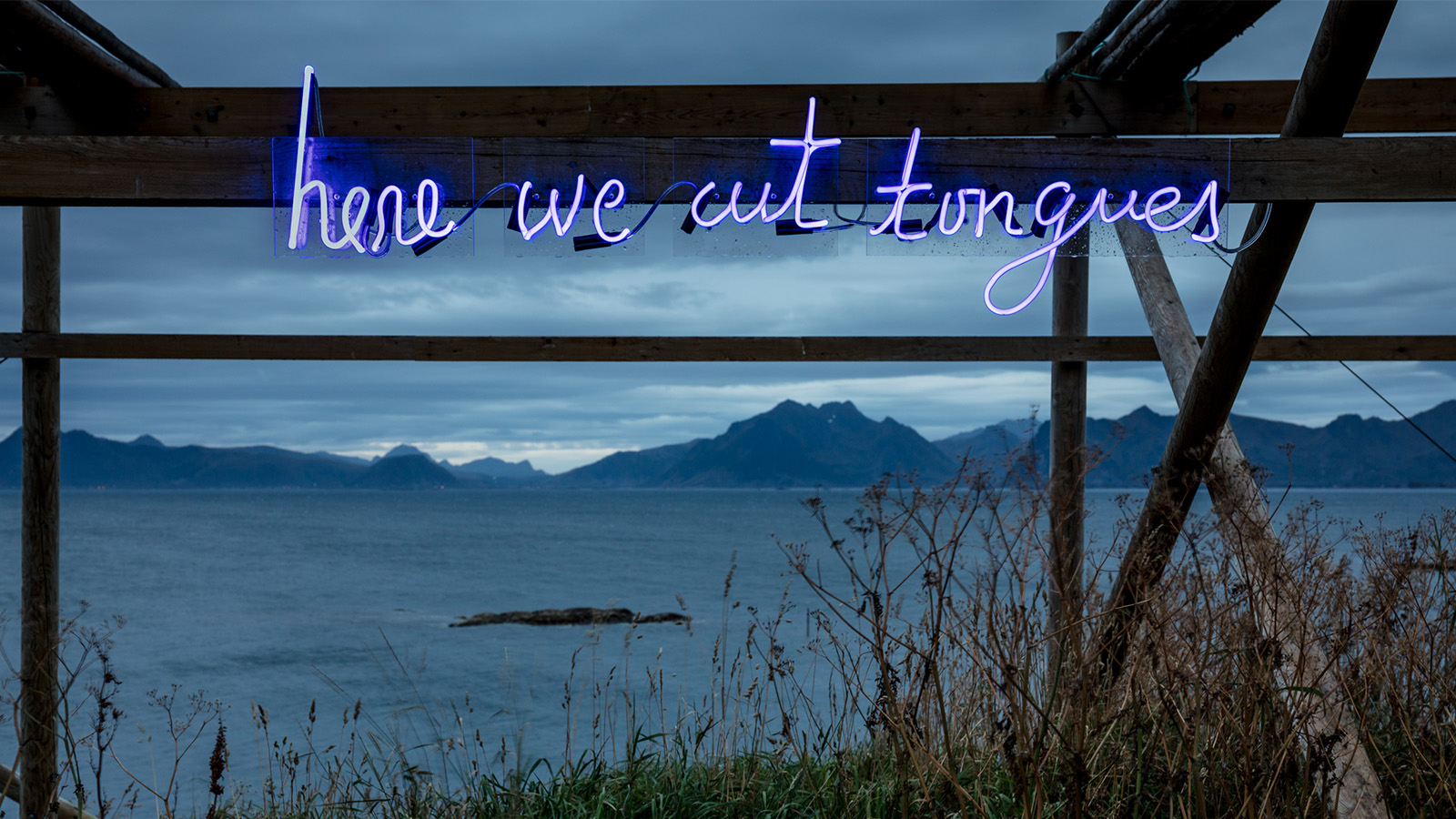 Wanås Konst sculpture park merges art and nature in Sweden
Wanås Konst sculpture park merges art and nature in SwedenWanås Konst’s latest exhibition, 'The Ocean in the Forest', unites land and sea with watery-inspired art in the park’s woodland setting
By Alice Godwin
-
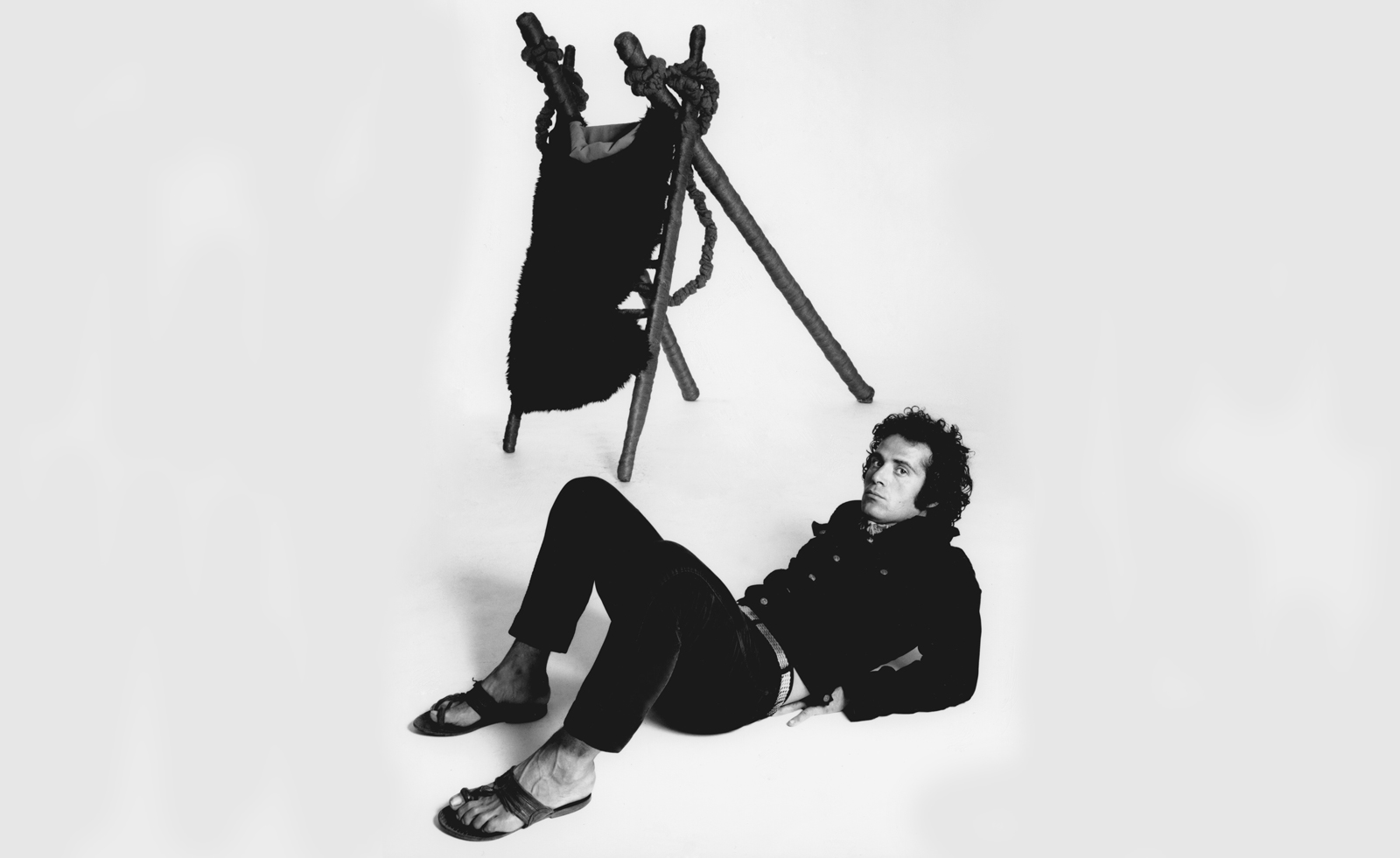 Pino Pascali’s brief and brilliant life celebrated at Fondazione Prada
Pino Pascali’s brief and brilliant life celebrated at Fondazione PradaMilan’s Fondazione Prada honours Italian artist Pino Pascali, dedicating four of its expansive main show spaces to an exhibition of his work
By Kasia Maciejowska
-
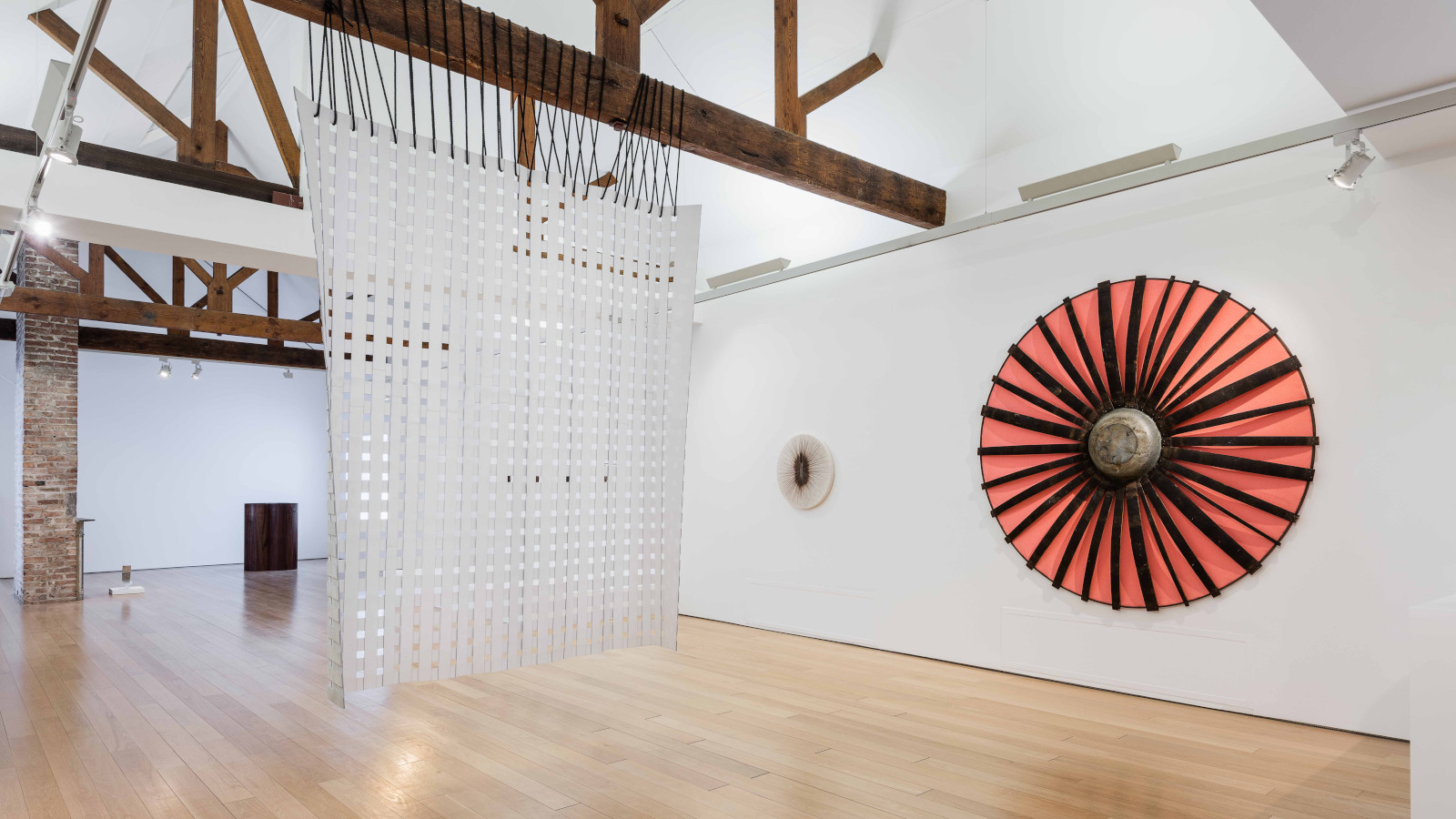 John Cage’s ‘now moments’ inspire Lismore Castle Arts’ group show
John Cage’s ‘now moments’ inspire Lismore Castle Arts’ group showLismore Castle Arts’ ‘Each now, is the time, the space’ takes its title from John Cage, and sees four artists embrace the moment through sculpture and found objects
By Amah-Rose Abrams
-
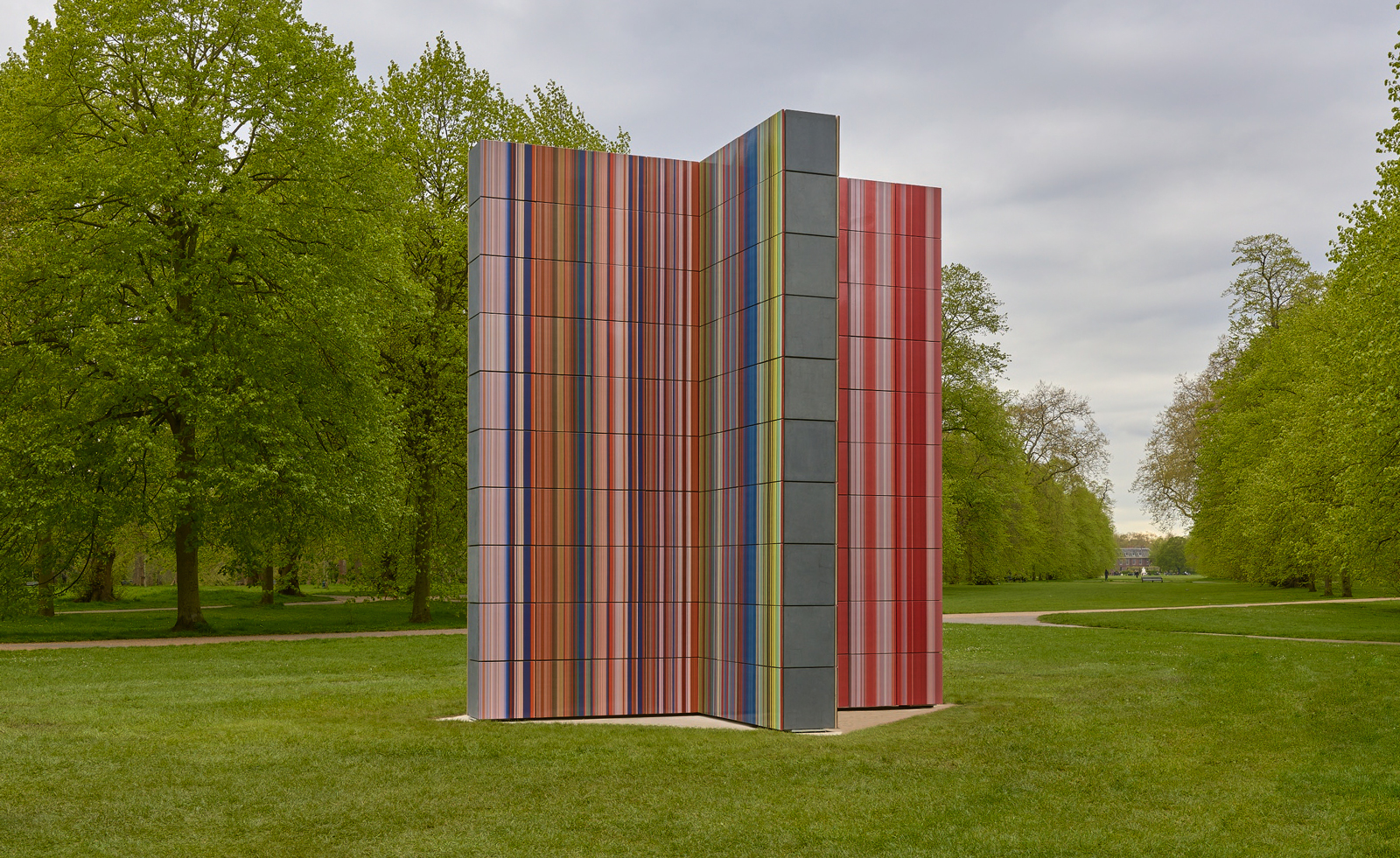 Gerhard Richter unveils new sculpture at Serpentine South
Gerhard Richter unveils new sculpture at Serpentine SouthGerhard Richter revisits themes of pattern and repetition in ‘Strip-Tower’ at London’s Serpentine South
By Hannah Silver
-
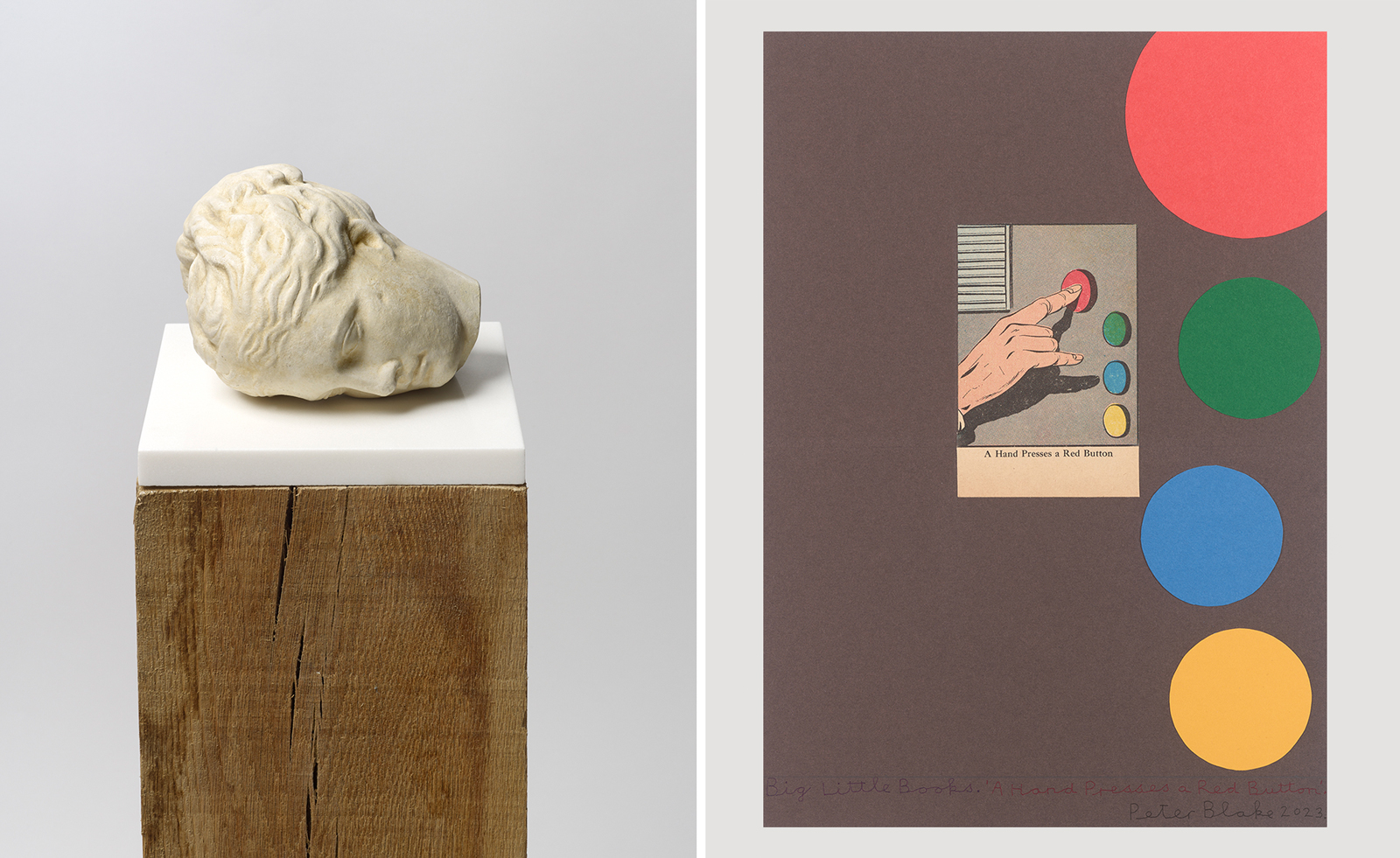 Peter Blake’s sculptures spark joy at Waddington Custot in London
Peter Blake’s sculptures spark joy at Waddington Custot in London‘Peter Blake: Sculpture and Other Matters’, at London's Waddington Custot, spans six decades of the artist's career
By Hannah Silver